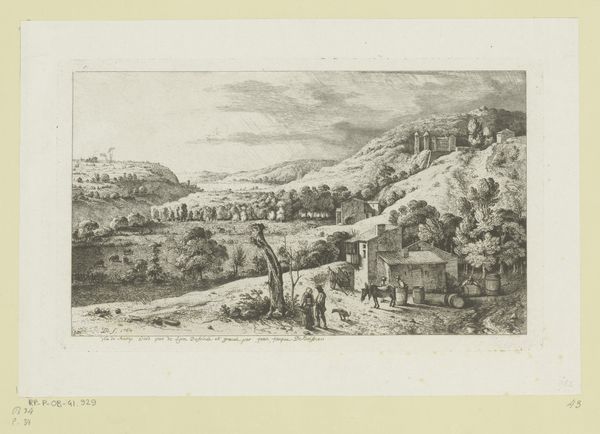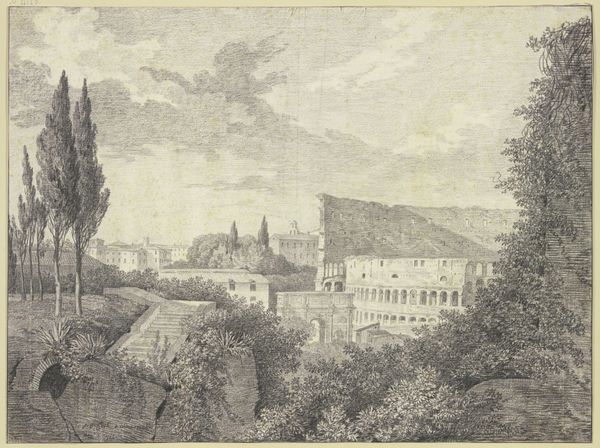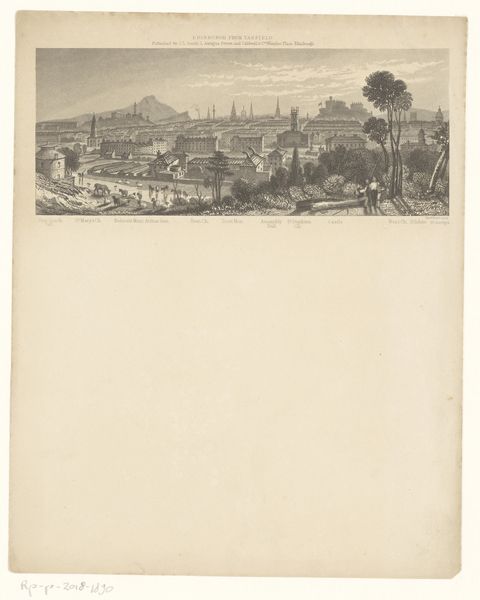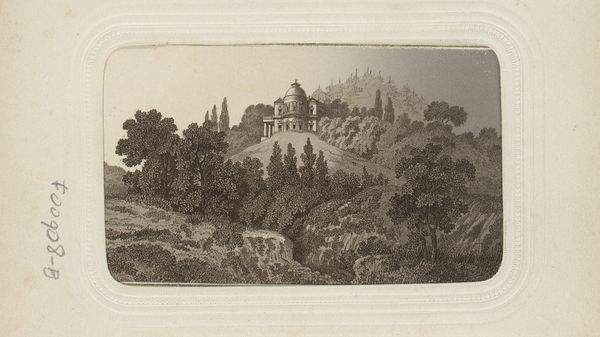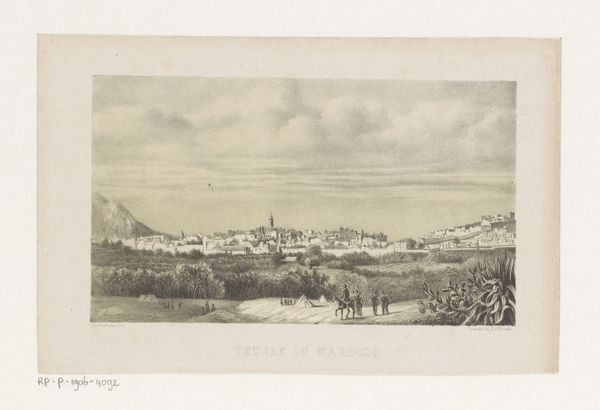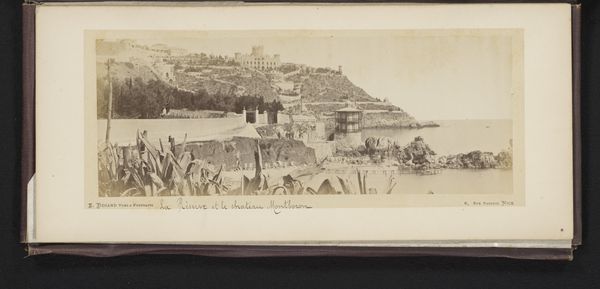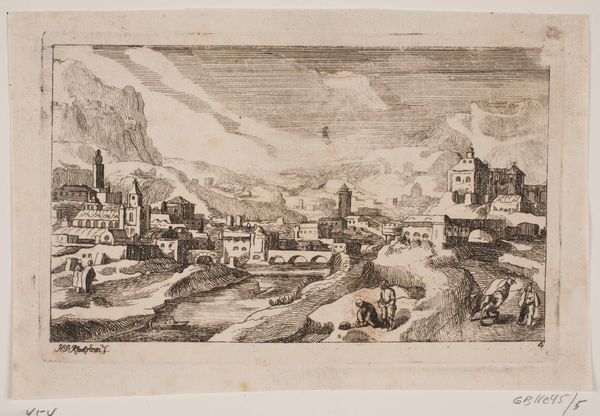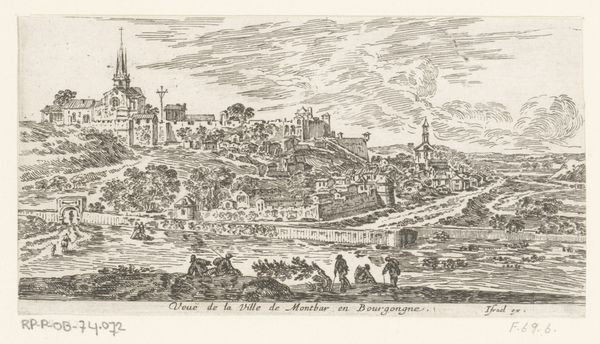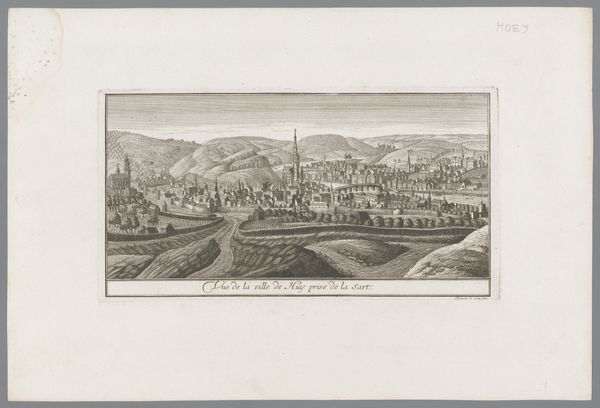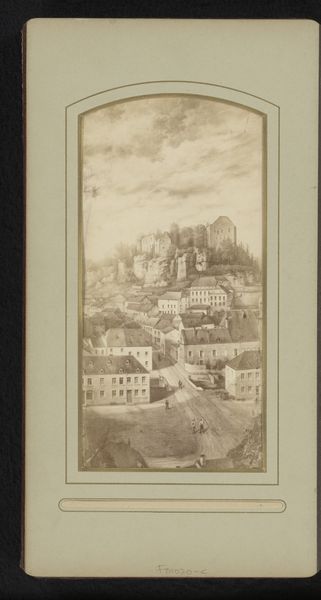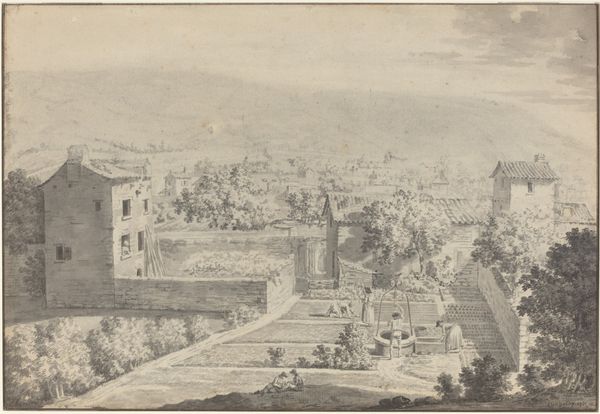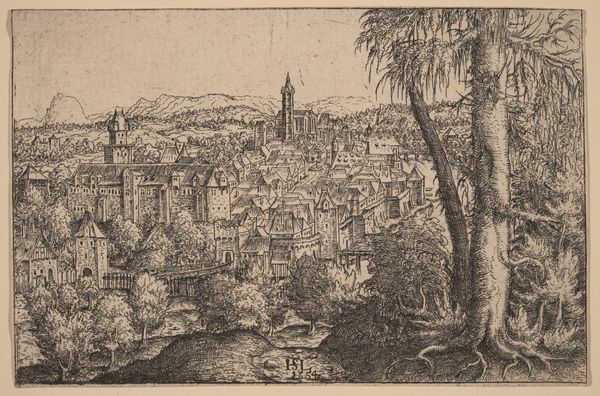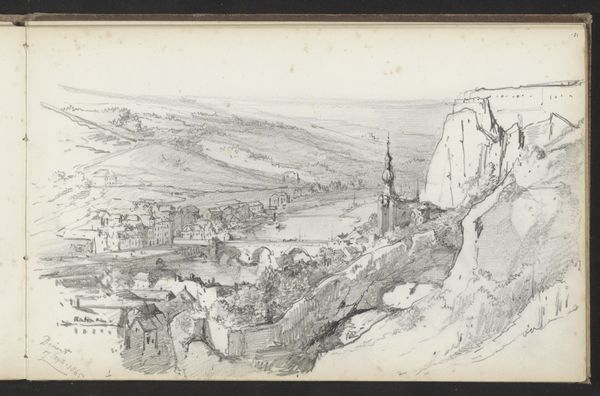
Dimensions: height 110 mm, width 67 mm
Copyright: Rijks Museum: Open Domain
Editor: So, here we have an engraving titled "Fotoreproductie van een prent van een gezicht op Aken," dating roughly between 1860 and 1885, by Jm. v. Ph. Frey. I'm immediately drawn to its old-world feel; the meticulous lines capture this distant cityscape with incredible detail. What's your take on it? Curator: The "old-world feel" you mentioned is key. This print provides a window into how cities like Aachen were perceived and presented in the mid-19th century. Consider the role these types of images played. This wasn't just art; it was also a form of documentation and promotion. Do you see any elements that speak to that promotional aspect? Editor: Well, there’s definitely a sense of grandeur, almost romanticizing the city with that high vantage point, the cathedral looming large. Almost like civic boosterism, portraying a powerful, historic center. Curator: Precisely. Prints like this served as visual propaganda, shaping public perception and reinforcing civic pride. Notice the deliberate inclusion of the cathedral. It was not only a landmark, but also a symbol of Aachen's historical importance and Catholic identity, especially significant given the political climate of the time with rising nationalism and shifting power dynamics. How does that knowledge impact your reading of the image? Editor: It shifts it considerably. It's less about objective representation and more about a constructed narrative of Aachen’s importance. That church isn't just there; it’s strategically placed. Curator: Indeed. Think about who commissioned this and for what purpose. The distribution of such prints often involved specific political or economic agendas. And think about the viewers – where were these prints displayed, who was likely to see them, and how would they be impacted by this romanticized view of a city? Editor: It's amazing to consider this print not just for its aesthetic value, but also as a product deeply embedded in its socio-political context. It's definitely changed how I view similar pieces. Curator: Absolutely, understanding the historical forces shaping art helps us unpack the layers of meaning embedded within the image. This has reshaped my thinking too, making me consider propaganda, national identities and civic engagement through architectural imagery.
Comments
No comments
Be the first to comment and join the conversation on the ultimate creative platform.

